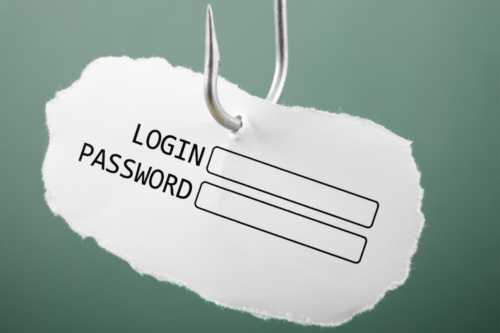Cybersecurity 101 Categories
What is a change of authorization (CoA) request?
A Change of Authorization (CoA) request is a network protocol message used in the context of network access control and authentication systems. It is typically employed in scenarios where a user’s access privileges or attributes need to be modified during an active network session.
CoA requests are commonly used in conjunction with the Remote Authentication Dial-In User Service (RADIUS) protocol, which is widely used for managing user authentication and authorization in network environments. When a CoA request is initiated, it is sent by a network access server (NAS) to a RADIUS server to request a change in the user’s authorization state or attributes.
The CoA request contains information specifying the desired change, such as granting additional access privileges, revoking existing privileges, modifying session parameters, or updating user attributes. The RADIUS server processes the CoA request and applies the necessary changes to the user’s session in real-time, allowing dynamic adjustments to the user’s authorization and network access.
CoA requests are often utilized in scenarios where an administrator needs to promptly update a user’s access rights without requiring them to terminate their current session. This flexibility is particularly valuable in environments that demand fine-grained access control or where access privileges need to be adjusted based on changing circumstances or policies.
It’s important to note that while RADIUS is a commonly used protocol for CoA requests, other network access control systems may have their own mechanisms for implementing similar functionality.
What is a change of authorization (CoA) request alternative?
An alternative to Change of Authorization (CoA) requests in the context of network access control and authentication is the use of session termination followed by session reestablishment with updated authorization parameters. This approach involves terminating the user’s current network session and then initiating a new session with the desired changes in access privileges or attributes.
In this alternative method, when a change in authorization is required, the network access server (NAS) or authentication server terminates the user’s existing session. This termination can be achieved by sending a session termination request or by simply disconnecting the user from the network. Once the session is terminated, the user is required to establish a new session by re-authenticating with the updated authorization parameters.
The new session can involve the user going through the entire authentication process again or, in some cases, a simplified reauthentication process may be used, such as reusing the existing session credentials and only updating the authorization parameters. The specific implementation may vary depending on the network access control system and the protocols used.
This session termination and reestablishment approach provides a way to enforce immediate changes in authorization without relying on CoA requests. However, it has the drawback of temporarily interrupting the user’s network connectivity while the new session is established. CoA requests, on the other hand, allow for dynamic updates during an active session without requiring a complete session termination, thereby minimizing interruptions for the user.
It’s worth noting that the availability and suitability of session termination and reestablishment as an alternative to CoA requests may depend on the capabilities and configuration of the network access control system in use.
What does a CoA request allow you to do?
A Change of Authorization (CoA) request allows you to make dynamic changes to a user’s access privileges or attributes during an active network session. The primary purpose of a CoA request is to modify the authorization state of a user without requiring them to terminate their current session. Here are some of the actions you can perform using a CoA request:
- Grant additional access privileges: A CoA request can be used to provide a user with additional access rights or permissions. For example, if a user initially had restricted access to certain resources, a CoA request can be used to grant them expanded access privileges during their ongoing session.
- Revoke access privileges: Similarly, a CoA request can be used to revoke or remove specific access privileges from a user in real-time. This can be useful in situations where a user’s access needs to be immediately restricted due to policy violations, security concerns, or changes in their authorization status.
- Modify session parameters: CoA requests can also be used to change various session parameters. For instance, you can update the maximum session duration, adjust the maximum bandwidth allocation for the user, or modify any other session-specific settings that affect the user’s network experience.
- Update user attributes: A CoA request can modify the attributes associated with a user’s session. This can include updating user-specific information such as their role, group membership, billing information, or any other attributes relevant to their authorization and access control.
- Trigger reauthentication: In some cases, a CoA request can be used to initiate a reauthentication process for the user. This can be useful when there is a need to verify the user’s identity or reconfirm their authorization credentials before allowing them to continue their session with updated privileges.
Overall, a CoA request provides the capability to dynamically adjust a user’s authorization and access control parameters during an active network session, allowing for real-time changes to their privileges and attributes without requiring session termination or reauthentication.
Are there any vulnerabilities with a CoA request?
Yes, there are potential vulnerabilities associated with CoA requests that need to be considered in the design and implementation of network access control systems. Some of the vulnerabilities include:
- Authentication bypass: If an attacker is able to intercept and manipulate CoA requests, they may attempt to bypass the authentication process or modify the authorization parameters to gain unauthorized access. This can occur if there are weak or insufficient authentication and authorization mechanisms in place.
- Unauthorized privilege escalation: CoA requests can be vulnerable to abuse if there are inadequate access controls or insufficient validation of the request’s legitimacy. An attacker may attempt to send malicious or unauthorized CoA requests to elevate their access privileges beyond what is intended.
- CoA flooding attacks: CoA requests can be susceptible to flooding attacks where an attacker floods the network with a high volume of CoA requests. This can overwhelm the network infrastructure, leading to service disruptions or denial of service for legitimate users.
- Lack of encryption: If CoA requests are transmitted over insecure channels without encryption, they can be intercepted and manipulated by attackers. It is crucial to ensure that CoA requests are transmitted securely using encryption protocols to protect the integrity and confidentiality of the requests.
- Misconfiguration and human error: Incorrectly configured CoA request handling mechanisms or human errors during configuration can lead to unintended changes in user authorization or access rights. This can result in unauthorized access, service disruptions, or other security issues.
To mitigate these vulnerabilities, it is important to implement robust security measures. This includes using strong authentication and authorization mechanisms, validating and authenticating CoA requests, implementing access controls to prevent unauthorized CoA requests, encrypting CoA communications, and closely monitoring and auditing CoA activities for any suspicious or anomalous behavior. Regular security assessments and updates to address potential vulnerabilities are also essential to ensure the ongoing security of the network access control system.



